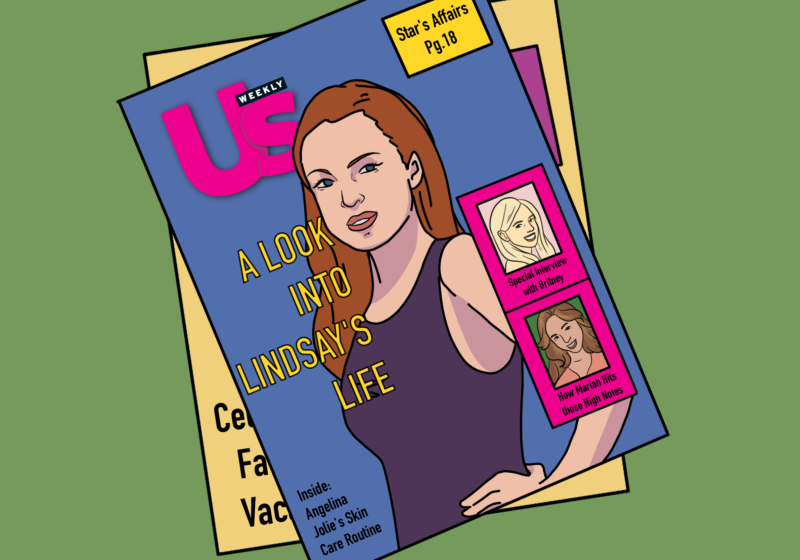Hello everyone. In the weeks since we last spoke, I’ve been reflecting on a piece I wrote earlier this year about the cyclical nature of fashion in which I touched on how the early 2000s has made a full comeback. I’ve been thinking about it (and my obsession with the Y2K aesthetic) ever since, and it seems, the rest of the internet has as well.
Early 2000s fashion is all over the place — on social media, online shopping, in culture magazines. The makeup brand ColourPop recently released a Lizzie McGuire collection. Last week, I saw a woman at the grocery store wearing a “Simple Life” sweatshirt (Paris Hilton and Nicole Richie’s popular television show that ran from 2003 to 2007). And a few days ago, New York Magazine’s culture website The Cut published an article called “What Will Be Cool This Summer?” by Safy-Hallan Farah. Among her predictions? Y2K and Mary-Kate and Ashley Olsen.
The fact that Farah mentioned the Olsen twins got me thinking about another facet of early 2000s culture that’s come to light recently, which is the vulturous nature of the paparazzi. While so much has changed in the world since the 2000s, the field of media coverage has stayed stagnant — female bodies are still mercilessly scrutinized by media publications. This relentless probing of female celebrities — and the high standard by which they are compared to their male co-stars — is not, by any means, a new phenomenon. But the emergence of the so-called “tabloid decade” came on the heels of a new, unprecedented obsession with celebrity culture and brought media to accessible new heights.
Last month, on the heels of their Britney Spears documentary, the New York Times published an article called “Lesson of the Day: ‘Speaking of Britney … What About All Those Other Women?’” in which columnists Callie Holtermann and Katherine Schulten offer a lesson in confronting the stereotypes about women that run rampant in media coverage — and in our own lives — throughout history. At one point in the article, they talk about the detrimental effect of the paparazzi on young celebrities and refer to tabloid publicity as the “celebrity media machine.”
The Olsen twins are two distinct young targets of this media machine which, ultimately, led to their retreat from acting in 2004 and their official departure from the entertainment industry in 2014. Tabloids picked apart their bodies, their habits, and their lifestyle, pinning them against other young female celebrities of the time. Mary-Kate in particular was thrown into the spotlight with rumors about weight loss due to a cocaine addiction — which, in reality, was the result of an eating disorder.
The Olsen twins’ departure from the scene is just one example of the toxicity inflicted by the early 2000s media frenzy. Lindsey Lohan was relentlessly exploited by the media and was characterized as a drug-addicted, alcoholic craze by the paparazzi that followed her incessantly during the peak of her fame. Paris Hiton has come out in recent years to announce that her socialite party girl persona and voice — that low drawl in which she uttered her iconic catchphrase “that’s hot” — was actually a character she was using to satisfy the image the tabloids had carved out for her.
As we’ve seen from the New York Times’ documentary, the absolute insanity of the paparazzi’s steadfast and ever-tightening grip on Britney Spears resulted in the deterioration of her mental health, and ultimately, her imprisonment in an unjust conservatorship under her father. Similarly, Amanda Bynes was pursued by the paparazzi for years until the tabloids’ obsession with both her mental state and her body resulted in a mental health downfall, a sustained Adderall addiction and, like the Olsen twins, a complete departure from the entertainment scene.
There is a certain narrative expected of young women in America, and those who are unable to live up to such impossible expectations are immediately shunned by the double standard that scrutinizes women’s behavior more than men’s. The resurgence of the early 2000s in the past few years has illuminated the detrimental effects of the tabloid decade, but such behavior doesn’t stop there. America, and society at large, patrols women’s behavior and tells them what they can and cannot do. The double standard in the media is merely a reflection of the double standard we hold as citizens. While this may no longer be just in the grubby hands of the paparazzi, we can still see it in social media and all over the internet. Why are there so many rules around gender? Why can’t we just let people do their thing? I don’t know. Clearly, though, we can’t — or, at least, we haven’t been able to yet. While Y2K resurges in popularity, we have to keep our biases away.






